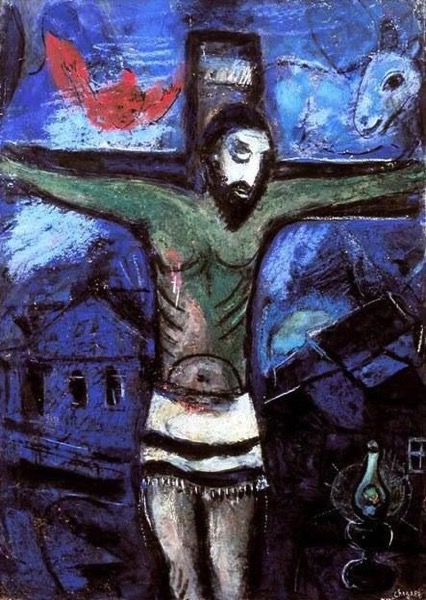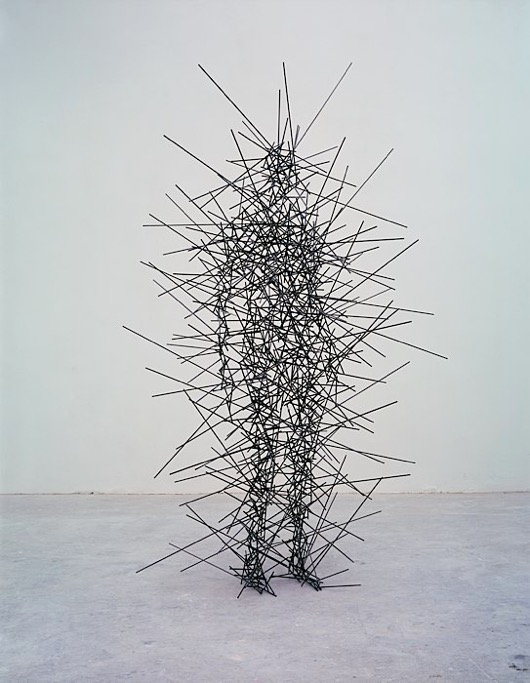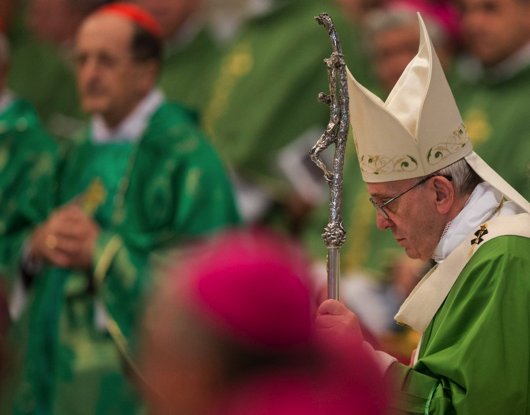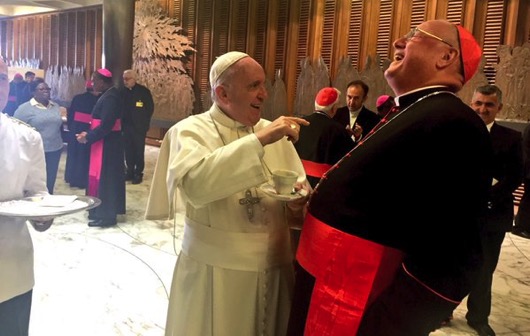
1665 words, 8 min read
During this Year of Mercy, I would like to get a deeper and richer understanding of what mercy means and how it has been understood differently by a verity of thinkers. Looking back at the Synod on the Family, an obvious place to start is with St. Thomas Aquinas, who has been referred to there on several occasions as a benchmark and on whom Pope Francis too has relied when speaking about this subject. Among St. Thomas's works too there is a clear front-runner for getting a sense of how he understood mercy, which is his monumental Summa Theologiæ.
In the Introduction to the first part of the Summa, which runs to a total of 2.8 million words (!), St. Thomas presents his aims as follows:
“We purpose in this book to treat of whatever belongs to the Christian Religion, in such a way as may tend to the instruction of beginners. [... W]e shall try, by God's help, to set forth whatever is included in this Sacred Science as briefly and clearly as the matter itself may allow.”While sophisticated arguments for the Summa's brevity could be constructed, it is clearly not a work you'd find in the “for dummies” section, and clarity too could be contested with the contemporary reader in mind. What still makes the Summa highly attractive, to my mind, is its deeply rational approach, whose frame of reference may be dated but whose principles and method are decidedly current.
Just by way of a sample, before we proceed to mercy, here is what St. Thomas has to say about discussing faith with those who don't have it:
“If our opponent believes nothing of divine revelation, there is no longer any means of proving the articles of faith by reasoning, but only of answering his objections—if he has any—against faith. Since faith rests upon infallible truth, and since the contrary of a truth can never be demonstrated, it is clear that the arguments brought against faith cannot be demonstrations, but are difficulties that can be answered.” [I, Q. 1, Art. 8, co.]Taking the text at first sight, there are definitely things to get hung up about today - referring to one’s partner in dialogue as an opponent, making claims about infallibility - but, with even just a sprinkling of the Principle of Charity, there is also a lot here that is accessible: understanding the limits of how far a person of faith can take one who is without it by reason alone, positioning reason as an unlimited ally of faith and posing a challenge to those who have faith, including the author of the above paragraph himself, to be prepared to present their faith on the level playing field of reason and to do so with confidence. It is not hard to see how the above is an invitation to humble, yet confident, dialogue and how such an attitude is echoed also in one of Benedict XVI’s most impactful exhortations made only three years ago almost to this day: “[T]he Christian can afford to be supremely confident, yes, fundamentally certain that he can venture freely into the open sea of the truth, without having to fear for his Christian identity.”
Turning to mercy now, and looking at the vast expanse of the Summa, we find that St. Thomas speaks about it 471 times there. First, he starts of by thinking about whether it is even possible for God to be merciful and he comes to the initial conclusion that the answer here, strictly speaking, has to be a resounding “no” [when air first read this, I liked his confidence in going wherever the inescapable train of logic leads him :)]:
“[A] person is said to be merciful [misericors], as being, so to speak, sorrowful at heart [miserum cor]; being affected with sorrow at the misery of another as though it were his own. Hence it follows that he endeavors to dispel the misery of this other, as if it were his; and this is the effect of mercy. To sorrow, therefore, over the misery of others belongs not to God.” [I, Q. 21, Art. 3, co.]To understand why St. Thomas dismisses the possibility of sorrow impelling God to act, let's go back to an earlier part of the Summa, where he presents his argument for God's immutability:
“God is altogether immutable [... because] there is some first being, whom we call God; and that this first being must be pure act, without the admixture of any potentiality, for the reason that, absolutely, potentiality is posterior to act. Now everything which is in any way changed, is in some way in potentiality. Hence it is evident that it is impossible for God to be in any way changeable.” [I, Q. 9, Art. 1, co.]Whoa! What's with the potentiality versus act business? Let's backtrack a bit further to get to the bottom of this, key point:
“For although in any single thing that passes from potentiality to actuality, the potentiality is prior in time to the actuality; nevertheless, absolutely speaking, actuality is prior to potentiality; for whatever is in potentiality can be reduced into actuality only by some being in actuality. Now it has been already proved that God is the First Being. It is therefore impossible that in God there should be any potentiality.” [I, Q. 3, Art. 1, co.]To get to the starting point then, we need to see how St. Thomas arrives at God being the First Being:
“But nothing can be reduced from potentiality to actuality, except by something in a state of actuality. Thus that which is actually hot, as fire, makes wood, which is potentially hot, to be actually hot, and thereby moves and changes it. Now it is not possible that the same thing should be at once in actuality and potentiality in the same respect, but only in different respects. For what is actually hot cannot simultaneously be potentially hot; but it is simultaneously potentially cold. It is therefore impossible that in the same respect and in the same way a thing should be both mover and moved, i.e. that it should move itself. Therefore, whatever is in motion must be put in motion by another. If that by which it is put in motion be itself put in motion, then this also must needs be put in motion by another, and that by another again. But this cannot go on to infinity, because then there would be no first mover, and, consequently, no other mover; seeing that subsequent movers move only inasmuch as they are put in motion by the first mover; as the staff moves only because it is put in motion by the hand. Therefore it is necessary to arrive at a first mover, put in motion by no other; and this everyone understands to be God.” [I, Q. 2, Art. 3, co.]Let's bring this all together and attempt an ultra-synthetic reconstruction of St. Thomas' argument from first principles: Because potentiality and actuality are mutually exclusive concepts, there is a need for a causal chain, which in turn necessitates a starting point. This starting point is God - a God who by being the first act cannot contain potentiality but only actuality. This also precludes him from sorrow and the desire to alleviate it, and therefore from mercy.
Rather than picking holes into the above (of which I see plenty, including a misunderstanding of infinity [see 19th century mathematicians such as Georg Kantor] and of causality [see David Hume]), I'd like to underline the rational rigor of St. Thomas’ method where he proceeds from the best available understanding of basic concepts and follows their consequences through with aplomb.
But why does he come back to mercy 471 times if he dismisses its applicability to God in the first pages of the Summa? Actually, he does not dismiss it at all and only points out that, when defined in human terms, mercy does not fit God 1:1. God's mercy - and therefore the mercy that we are ultimately called to live - is something other:
“To sorrow, therefore, over the misery of others belongs not to God; but it does most properly belong to Him to dispel that misery, whatever be the defect we call by that name. Now defects are not removed, except by the perfection of some kind of goodness; and the primary source of goodness is God, as shown above (Q. 6, A. 4). It must, however, be considered that to bestow perfections appertains not only to the divine goodness, but also to His justice, liberality, and mercy; yet under different aspects. The communicating of perfections, absolutely considered, appertains to goodness, as shown above (Q. 6, AA. 1, 4); in so far as perfections are given to things in proportion, the bestowal of them belongs to justice, as has been already said (A. 1); in so far as God does not bestow them for His own use, but only on account of His goodness, it belongs to liberality; in so far as perfections given to things by God expel defects, it belongs to mercy.” [I, Q. 21, Art. 3, co.]Human mercy hinges on identifying the other’s suffering with my own and alleviating it as my own. It is applied only to those others in whom I see myself. In some sense human mercy therefore passes through selfishness - I help you, but I do it by alleviating the root cause of my own suffering, which is your suffering. God’s mercy instead is devoid of selfish motives and is the result of goodness and justice given freely. I don't believe St. Thomas is speaking against human mercy here, but that he is pointing to what perfect justice looks like, as arrived at from rational first principles, and that this mercy is effectively a purified form of our own, where the good is done for its own sake and where all are therefore destinataries of mercy.








